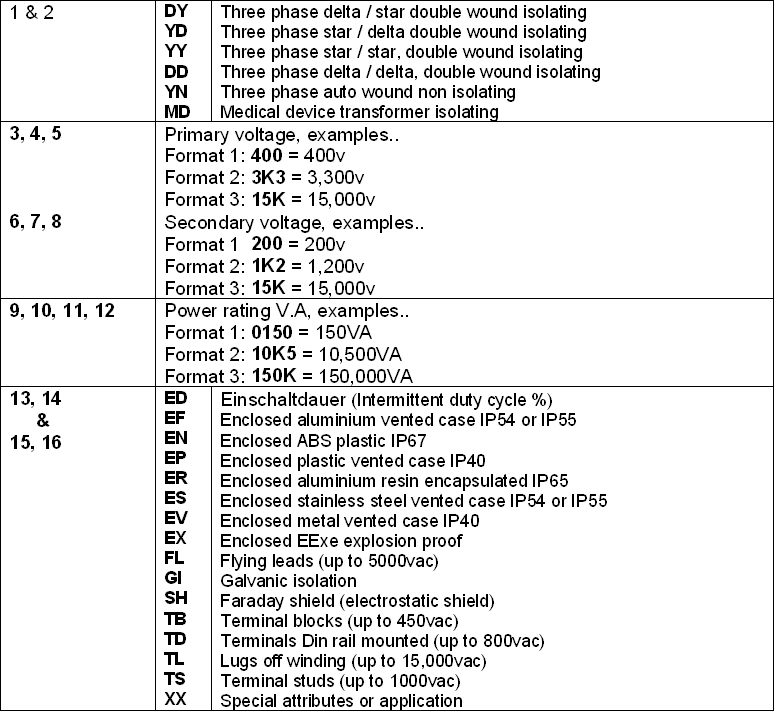Special Custom Build Solutions 3-phase up to 150kV.A

TSLtransformers design and manufacture three phase & hexaphase dry type transformers to your specific requirements rated from 150V.A through to 150kV.A at nominal frequency ranges up to 1000Hz. Design and manufacture is based upon the following basic criteria…
Construction
Open frame Class I (earthing required)
Enclosed class I (earthing required)
Power ratings (Core V.A)
“EI” shell type lamination, 4 limb, 150V.A ~ 25,000V.A
“Strip” core type lamination, 3 limb, 1,250V.A ~ 150,000V.A
Voltage ratings (prim input & sec output)
Safety isolating 0 ~ 50vac (ASNZS61558.2.6)
Isolating 51vac ~ 1000vac (ASNZS61558.2.4)
Isolating 1001vac ~ 15,000vac (IEC60076)
Auto non-isolating 0 ~ 1000vac (IEC61558.2.13)
Winding arrangements
Non-isolated (auto) STAR winding, vector group Yna0
Isolated Concentric (one above another), DELTA & STAR vector groups Dd0, Dyn11, Yyn0, Yd11
Isolated Zig-Zag, DELTA & STAR vector groups Dzn0, Yzn11
Insulation arrangements
BIL insulation coordination to 8kv / 50µS, thermal classes B, F & H (120~220ºC)
BIL insulation coordination to 10~25kv / 50µS, thermal classes F & H (155~220ºC)
BIL insulation coordination to 30kv / 50µS, thermal classes F & H (155~220ºC)
Terminations
Flying leads 250mm off winding ≤500 amp, ≤15,000 volt
Terminal block style ≤32 amp, ≤450 volt, Terminal DIN rail style ≤300 amp, ≤800 volt
Terminal studs ≤265 amp, ≤1000 volt & lugs off winding ≤2000 amp, ≤15,000 volt
Mountings
“L” feet with four mounting holes 150 ~ 150,000V.A
Enclosures
Mild steel epoxy powder coated, IP40
Aluminium marine grade epoxy powder coated, IP54, IP55, IP65
Stainless steel IP54, IP55
Product codification
TSLtransformers has adopted a product codification system to enable easy identification of custom build products.
You will find the product code on the product label and on other documentation relating to the product, the coding system is explained as follows…


For a custom build transformer contact us today
